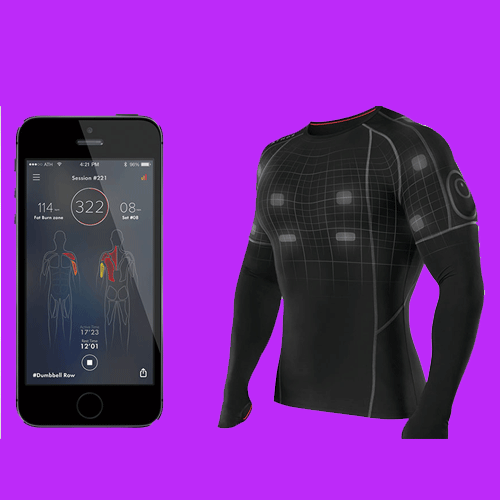violetcyber lab, Wearable technologies
Experiments to make the first functional smart clothing
Smart clothing, an important step in the clothing industry What is smart clothing? Have you ever experienced using (real) smart clothing before? If you search for the term smart clothing on the internet, hundreds to thousands of results will appear, some of which are news about a company conducting research and some others about another company making smart clothing. But has smart clothing really been made? What should smart clothing look like and what features should it have? And by attaching a few pieces of electronics and modules to an ordinary piece of clothing, have we made a smart clothing? In the following, we want to address these issues and, ultimately, talk a little about the experiments we are conducting.
Applications of a smart clothing Why do we need smart clothing? What’s wrong with our regular clothes that we now want smart clothing? Is it really necessary for our clothes to be smart?
In fact, the issue of making clothes smart, or better to say, smart clothing, is a matter that depends on people’s needs. But given today’s society, which is based on technology, having a garment that can make our comfort twice as much and even protect us is an important need. However, what will make people decide whether or not they need smart clothing and whether they are familiar with it is to be well acquainted with smart clothing and deeply understand what a smart clothing is and what features it has.
Certainly, by simply attaching an electronic module to a regular fabric garment, you cannot claim that you have created or produced a smart garment. Similarly, implementing Wi-Fi antennas or other features does not necessarily mean that a garment is smart. Even the heated clothing that is available in various models on the market today does not fall into the category of smart clothing. To understand what a real smart garment is and what features it should have, we will discuss a few important and fundamental features of smart clothing below:
- A smart garment has its own special fibers, which means that the type of fabric and fibers used to produce the smart garment must also have special features, such as being anti-static or having a capacitive state for electric charge. They should also have a special nano structure that can be determined in research to understand what features will be useful for the user and fulfill an important need. An example is that the nano structure of the garment should be such that by applying a voltage, the anti-bacterial state of the garment is activated, and it is disinfected, which can be a system for protecting against viral contamination.
- The garment must have electronic circuits, internal computing chips, and its own special communication system. The point is not to simply attach an electronic module, such as a microcontroller, to the garment, but rather to design and manufacture a special chip for the smart garment that can control the entire garment process when incorporated into the garment.
- A smart garment should have various types of sensors according to its needs. For example, a smart garment should have medical sensors to detect potential physical disorders before they become serious and issue necessary alerts. Sensors that can read skin conditions such as sweat composition or skin inflammation and send this information to an analysis center.
- A smart garment should provide comfort for its user, such as temperature control based on the surrounding air temperature. That is, the garment should have both heating and cooling systems and be able to adjust its temperature based on the environmental temperature so that the person wearing the garment experiences a moderate state.
- The most important feature of a smart garment is that all the above-mentioned features should be in the micrometer and nanometer range, and the garment should maintain its softness and smoothness so that the person does not feel that they are wearing many additional equipment. In fact, it should look like a normal and soft garment.
- A smart garment should be designed and built for different purposes. For example, a smart garment that is intended to be used by a city dweller will naturally be different from a miner’s garment and will have different and distinct features.
The company Violetcyber, which is a technology development company, is currently researching and working on a real sample of smart clothing. We are working on fibers, microcircuits, nanoelectronics, and custom chip engineering for smart clothing, as well as sensor technology, in order to offer the first real sample of smart clothing in the near future. So it can be said that there is very good news about smart clothing on the way. When the first real sample is ready for testing, it will be announced through the official website of Violetcyber. Of course, if you are interested in receiving the latest technologies that we are working on and being the first to be informed about the new and smart products that are soon to be released, register in the newsletter section below to receive this new information.

